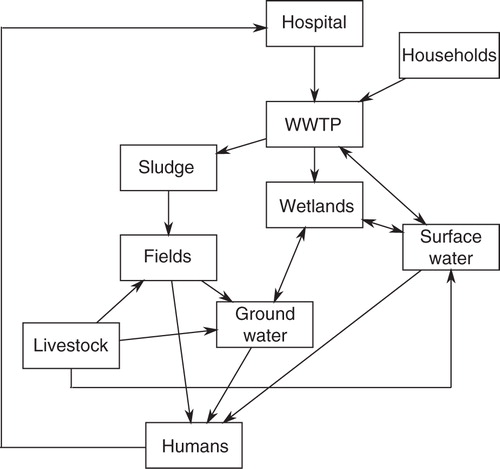Figures & data
Fig. 1. The basic structure of a class 1 integron. The gene intI1 encodes a site-specific integrase which can excise and integrate gene cassettes at the site-specific integration site attI. In this example, the integron contains three gene cassettes denoted as GC1, GC2, and GC3. Expression of the gene cassettes is induced by the promoter PC. Class 1 integrons also consist of two conserved genes at the 3′-end, quarternary ammonium compound resistance gene qacEΔ1 and sulphonamide resistance gene sulI.
Fig. 2. Antibiotics and antibiotic resistance genes (ARGs) can enter and re-emerge in humans via the environment by a number of different routes. For example, antibiotics and ARGs from patients taking antibiotics can end up in various environments (e.g. surface water) via excrements which pass through the wastewater treatment system. The commixture of antibiotics, ARGs and resident environmental bacteria at these locations provide an ideal opportunity for ARGs to develop and disseminate in the bacterial community.

